The Value of Cardboard Box Play to Help Kids Learn
Let’s take a closer look!
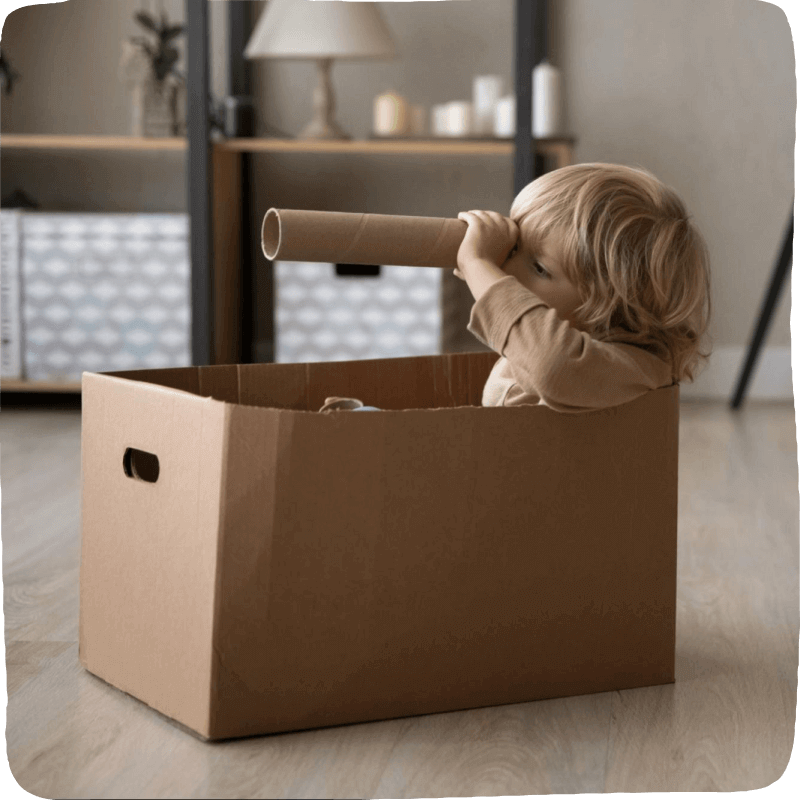
“Forget about my present…just give me the box!!!”
From Trees, to Hats, to Playthings: The Origin of Cardboard!
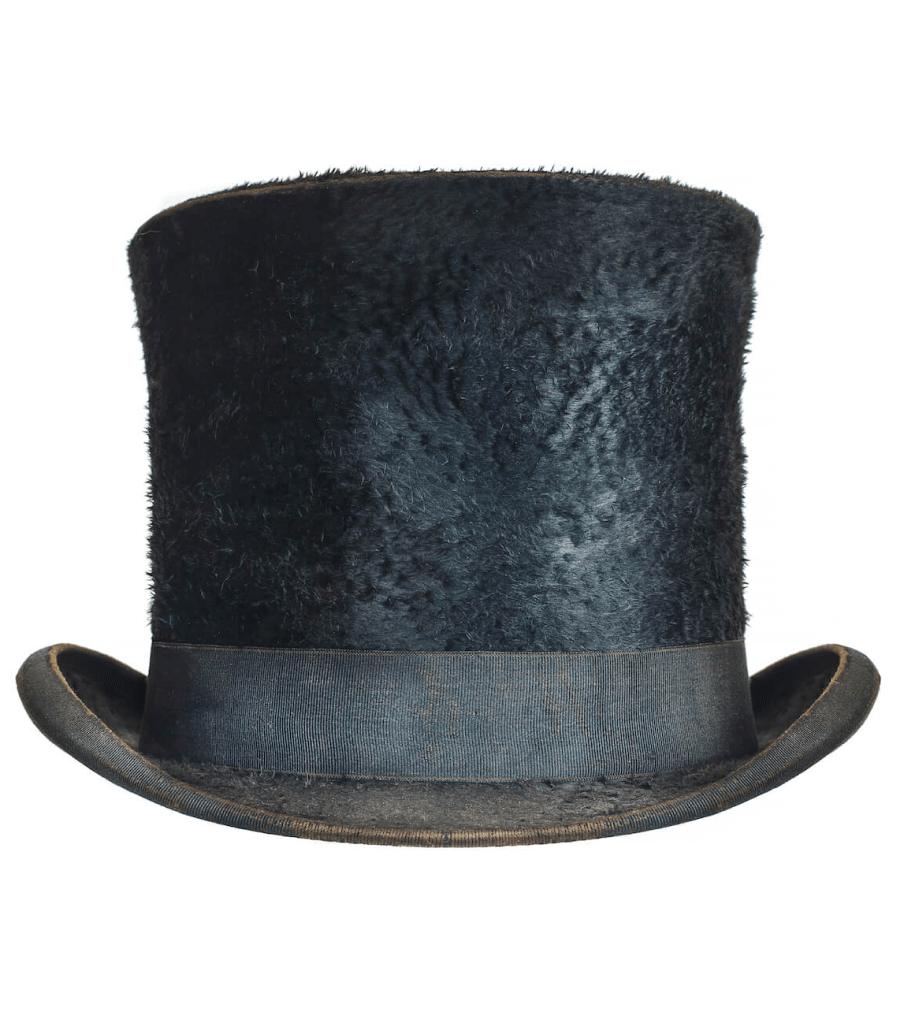
Cardboard was originally invented in China some 4,000 years ago using the bark from Mulberry trees. Then, in 1856, brothers, Edward Allen and Edward Healey invented corrugated paper to help support and stiffen up the hats that they were making. Finally, in 1879, Scottish-born Robert Gair invented the cardboard boxes that we have come to know and love. (How the Cardboard Box Was Invented. M. Matt Blitz – TodayIFoundOut.com. Published February 9, 2015)
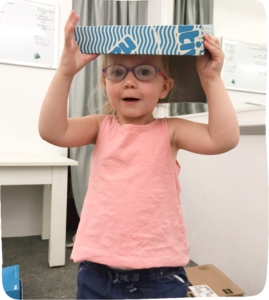
Boxes Can be Anything!
The ultimate open-ended material for play, cardboard boxes are simple enough to transform into absolutely anything your little one dares to imagine. Even more exciting, card board boxes are not bound by any form or function, so your little one’s play can spontaneously change as their ideas evolve.
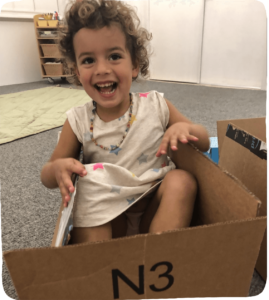
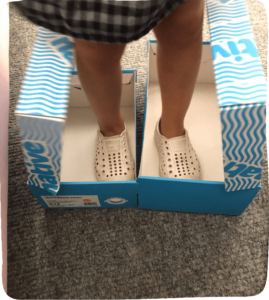
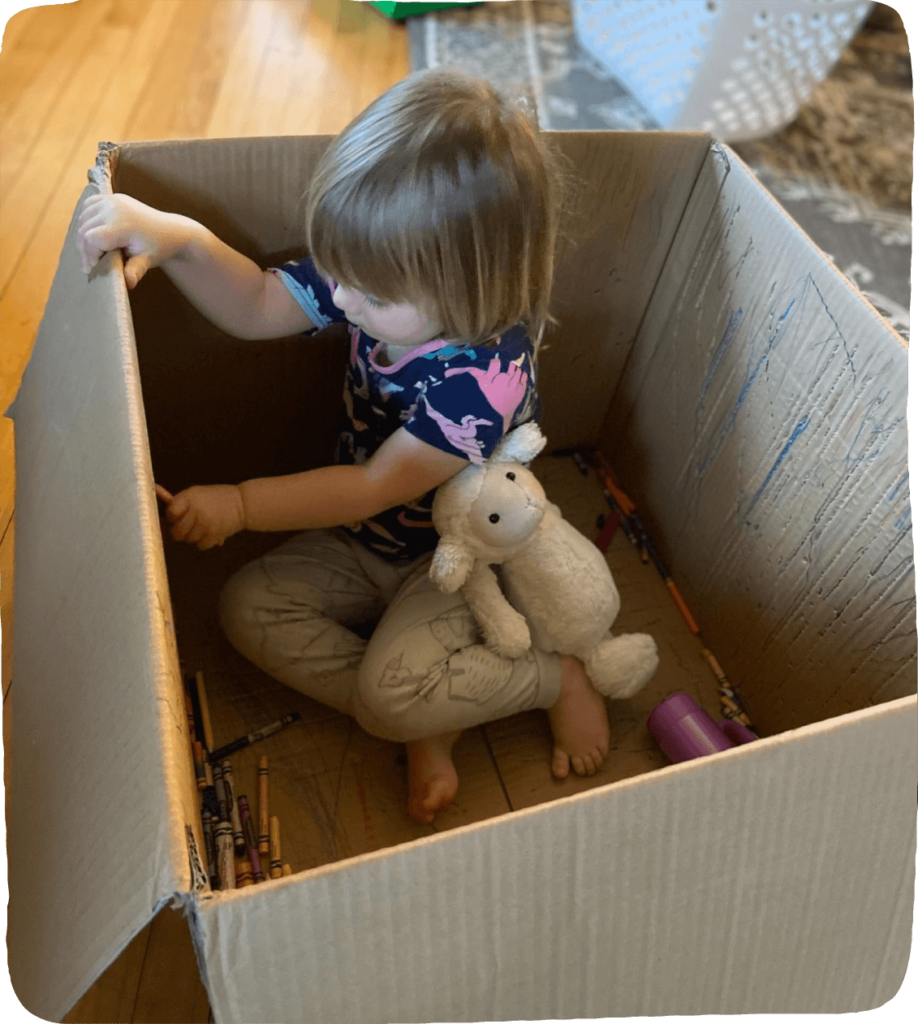
a car for a ride, some skates for your feet, a place to unwind, a new outfit, a canvas to draw on, the best hiding spot ever, and so much more…
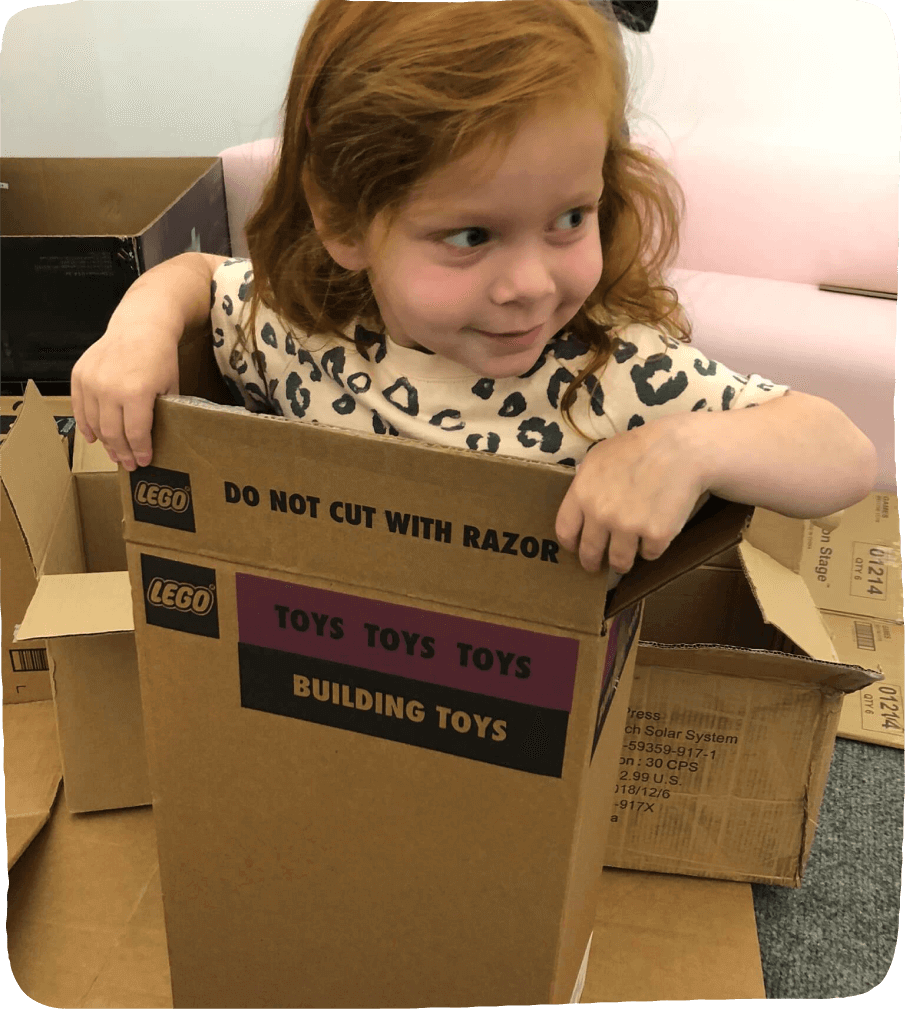
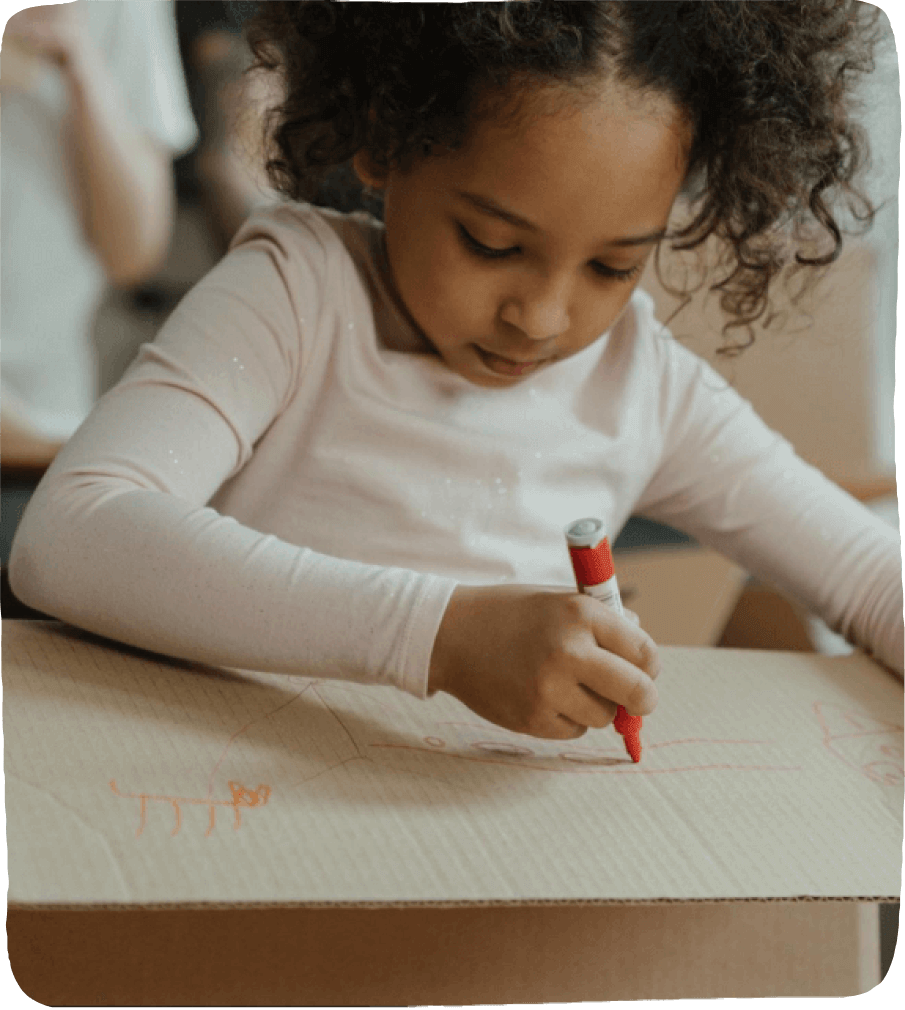
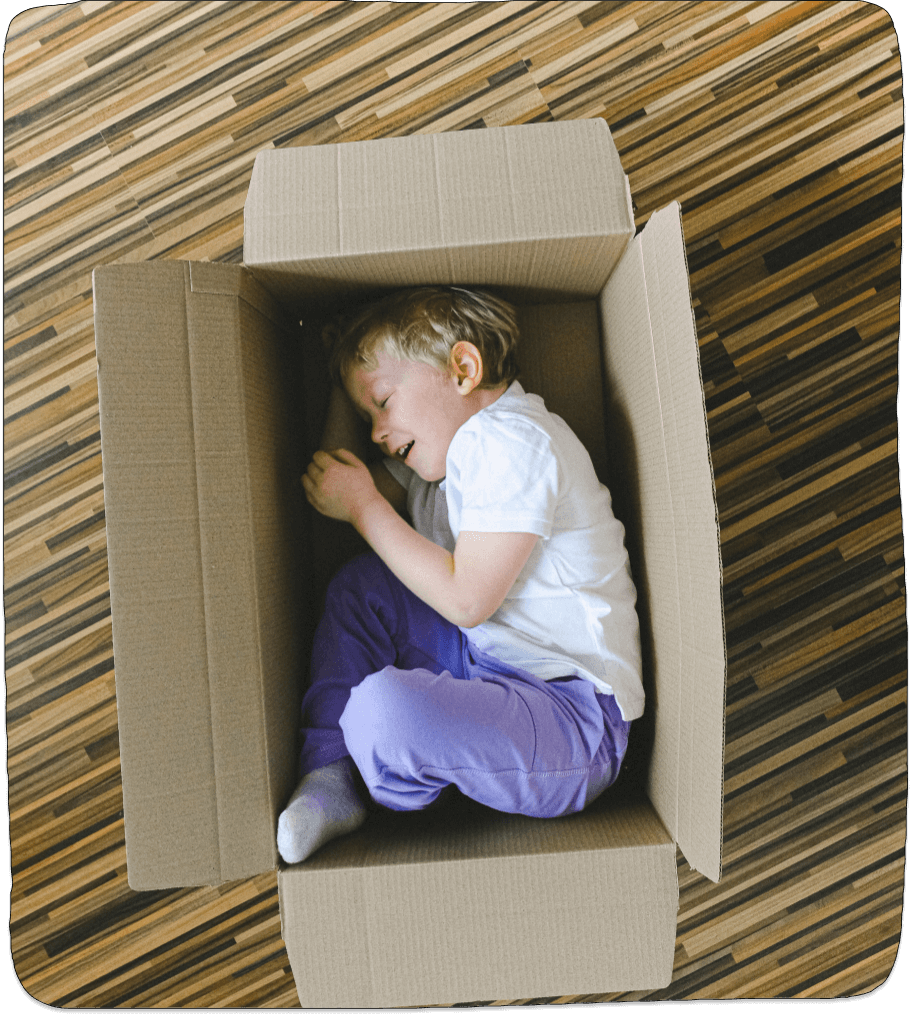
The Possibilities are endless
Cardboard Boxes are Everywhere!
One of the very best things about cardboard boxes is that they can be found everywhere and are for everyone, making the play possibilities accessible and almost effortless.
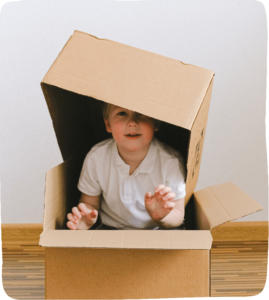
Where to find the best boxes?
It helps to know where to look. We find that folks are almost always happy to donate a box when they know that a child will enjoy playing with it. *Just PLEASE remember to check for metal staples especially with large boxes so that they will be safe for your little ones to play in.
- Your local hardware store
- At the grocery store
- Your Local Post Office
- Furniture and appliance stores that may have jumbo sized boxes
- Schools
- Restaurants
- Shoe stores
- Ask a friend who has just moved!
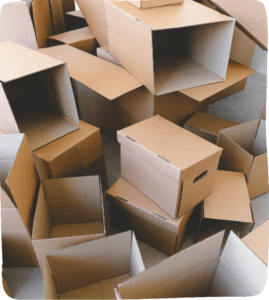
So, Where’s the Learning in Cardboard Box Play?

Large & Small Motor Control
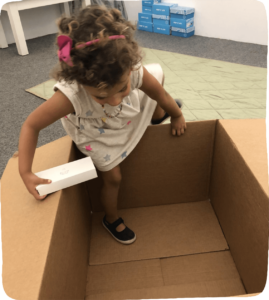
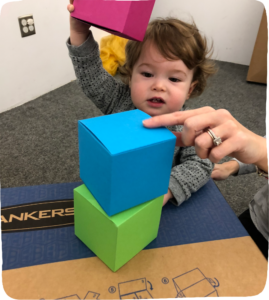
Handling big boxes requires big muscles especially since boxes can be a bit unwieldy. Children love to stack and line up boxes and then let them fall. This repetition and recreation exercises not only your child’s budding neurological connections, but also their growing motor skills. Similarly, stacking and handling small boxes requires focus and patience and small motor dexterity. Even the transfer of a toothpaste box from one hand to the other allows your child to practice cross-hemisphere processing. At home, you can save boxes of all shapes and let your child handle, stack and balance them.
Object Permanence
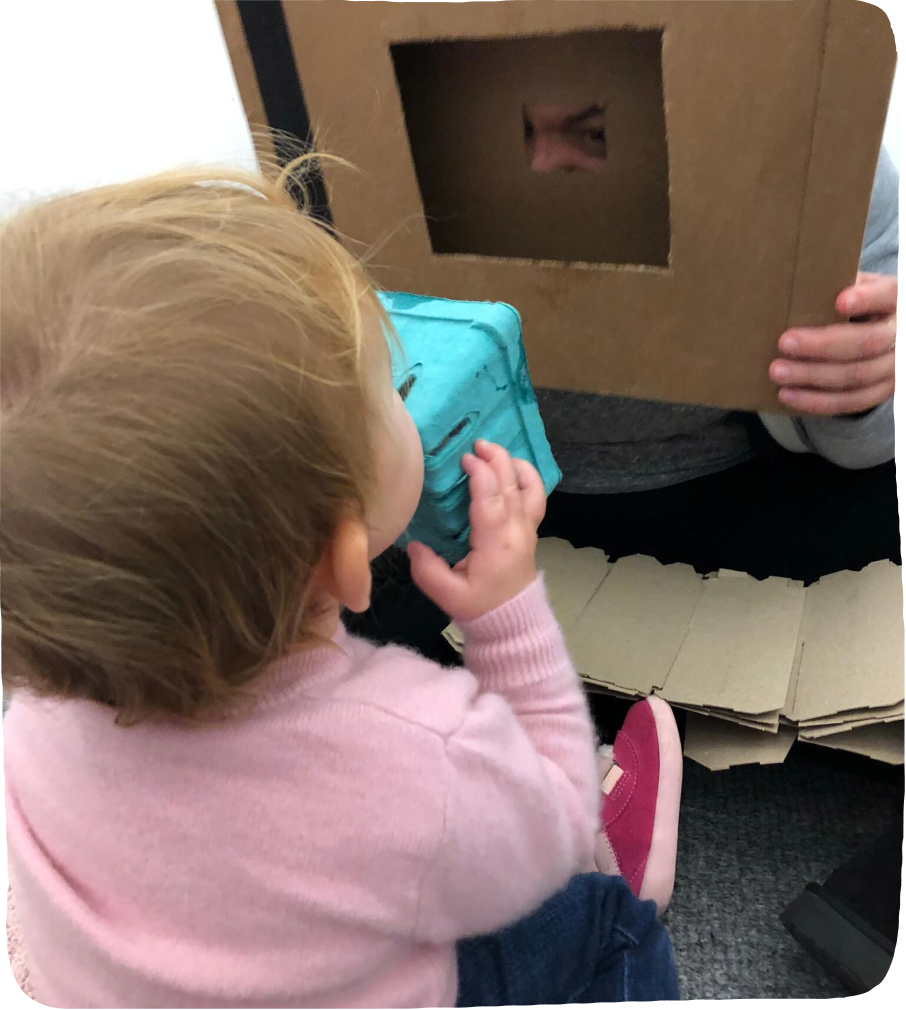
What is a box if not an opportunity to make an object (or a person) disappear and then reappear again? When little one’s are able to place a favorite stuffed animal inside a box and then pull it out again they are learning to understand that just because an object is out of sight, it does not mean that it is gone forever. Learning and practicing this skill builds your child’s confidence and overall emotional well-being and will help to ease separation anxiety.
Language Development
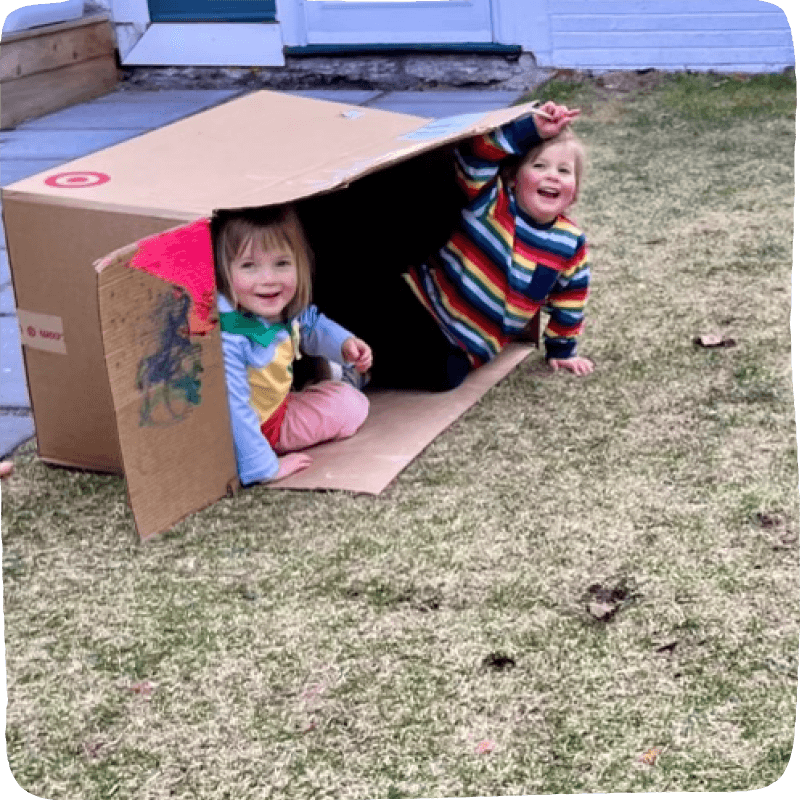
Children often want to climb inside cardboard boxes or transfer objects in and out of them. This play provides a great opportunity to practice words and concepts like “in and out,” “big and small,” and “open and shut.” Modeling and encouraging this type of vocabulary supports an understanding of directional language. This not only relates to objects but also to a child’s growing awareness of their body in space.
Quiet Sensory Play
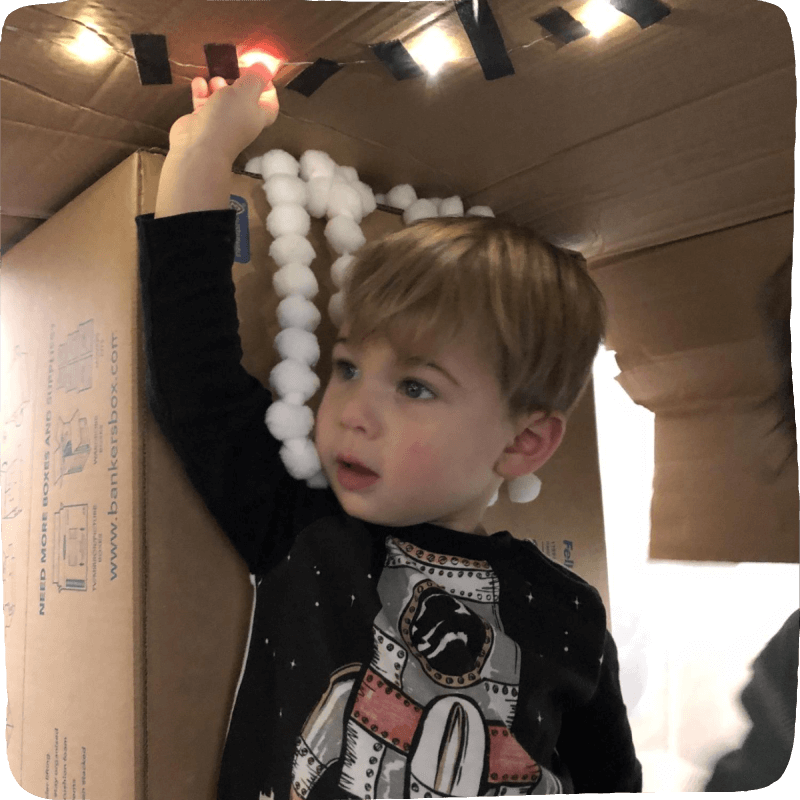
We often think of play as rough and tumble, but in this busy world, box play can lend itself very nicely to a quiet and cozy experience. Quiet play in a box helps a child self-soothe and slow down away from potentially overwhelming stimuli. A simple box can become your child’s safe little world away from the hustle and bustle.
Social-Emotional Benefits of Box Play
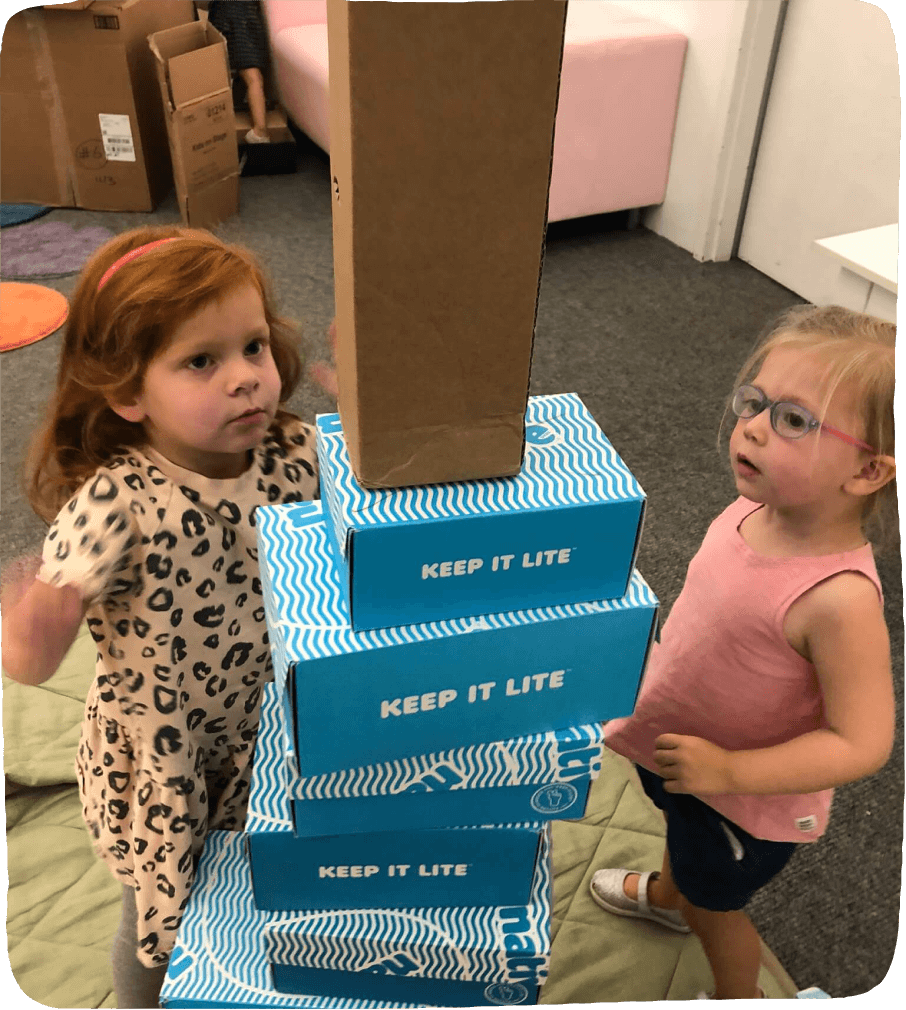
Bottom Line: Favorited by children across cultures, and across the ages, the humble cardboard box has set the stage for beloved childhood memories for almost all of us. Give your little one a cardboard box to play with, and you give them the world.
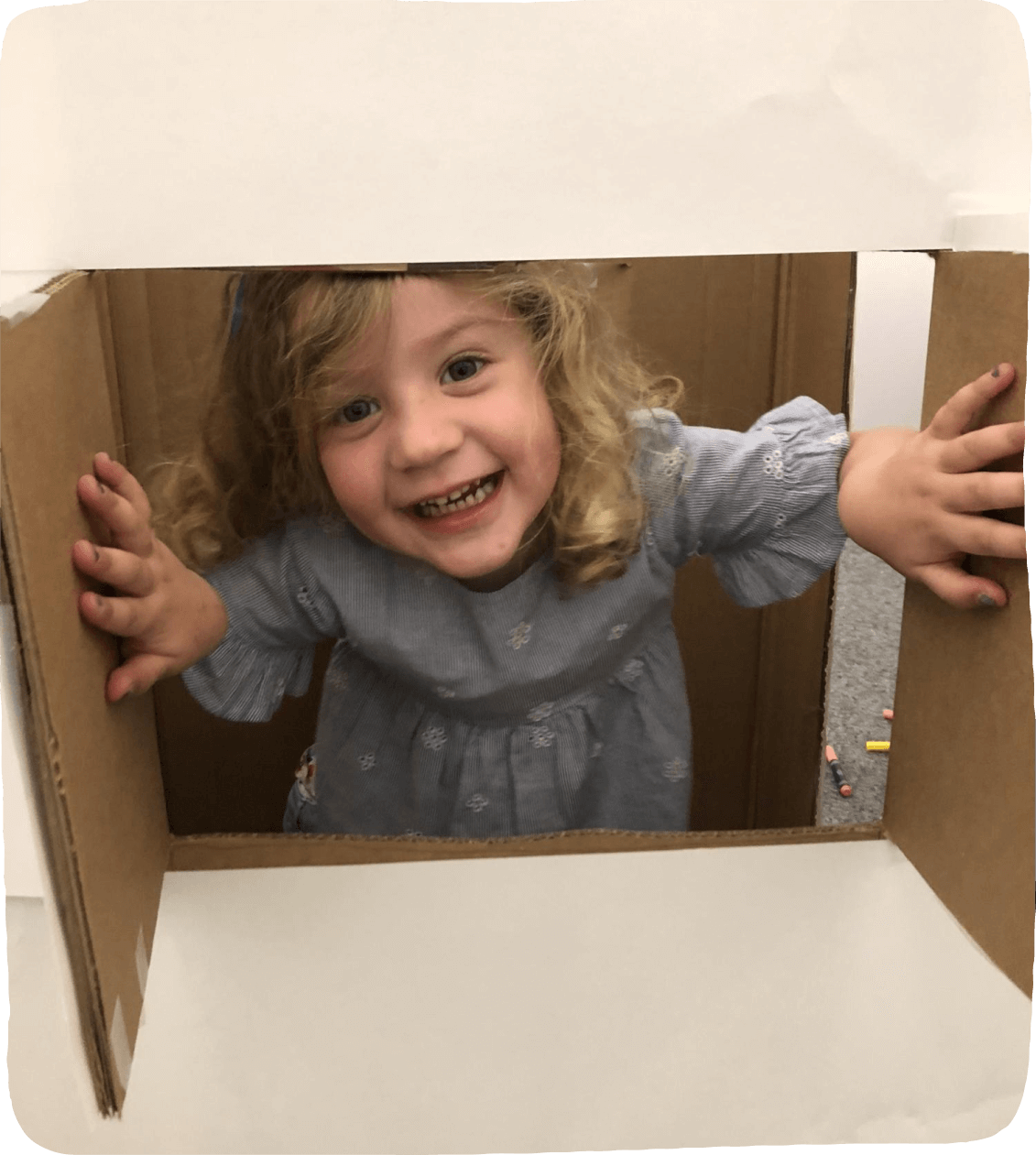
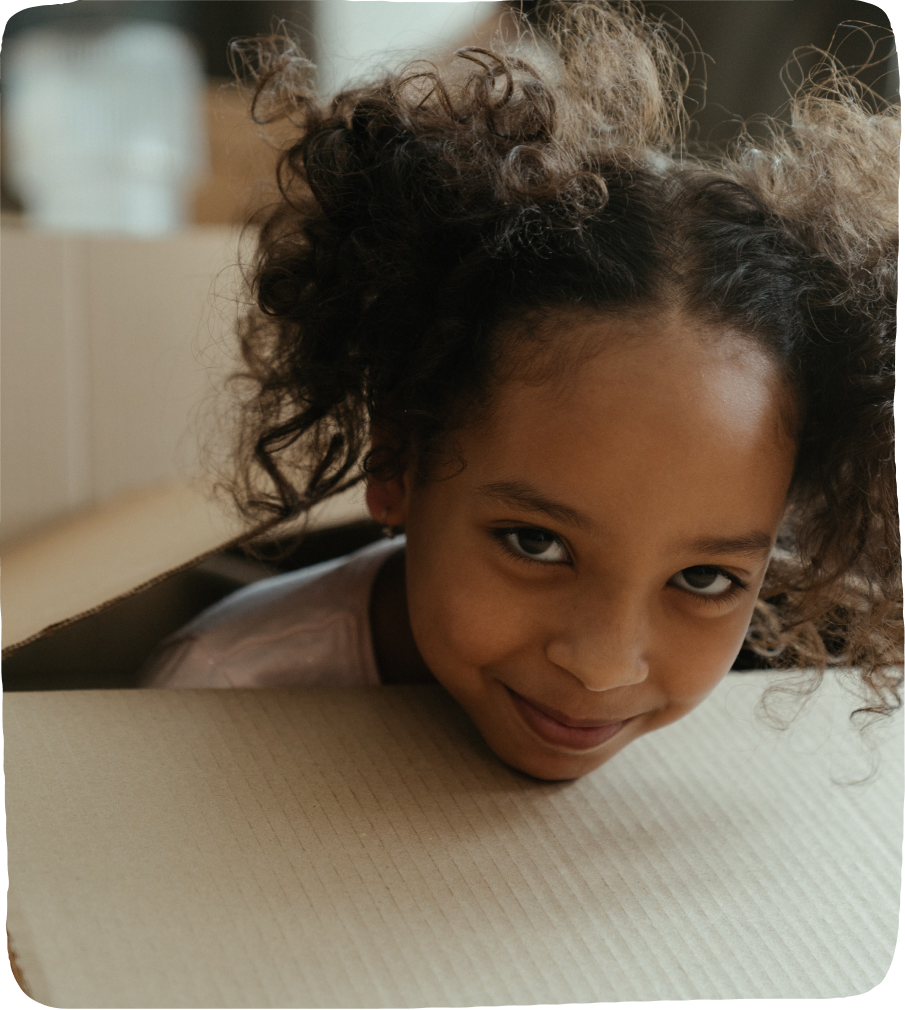

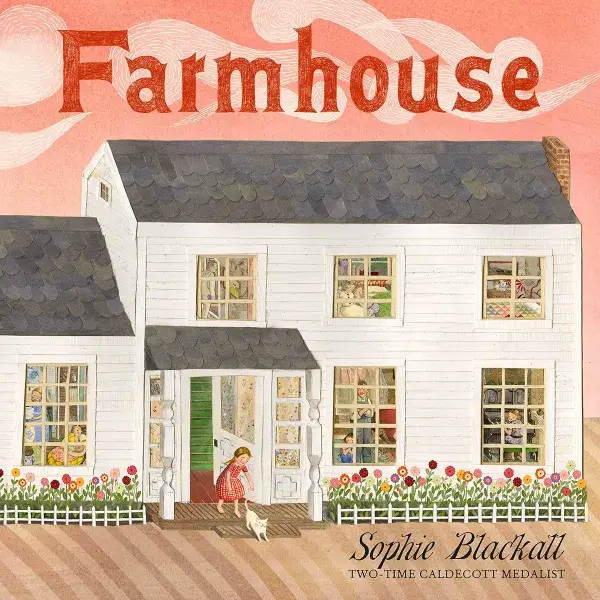
Leave a Reply